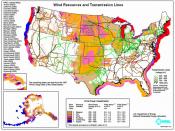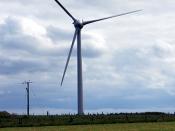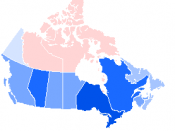ISSUE
Wind power, a source of low impact renewable energy commonly referred to as green power, is a growing issue within EC's environmental assessment (EA) program. While generally considered to be a power source that does not come at the expense of the environment, wind power can have some negative environmental impacts, namely on migratory birds.
WHY IS THIS AN ISSUE AND WHAT ARE THE ANTICIPATED IMPACTS?
There are two sides of the wind power issue that the EA program must broker: support of wind power in response to policy that supports clean air and climate change, and concern regarding migratory birds, species at risk, and habitat that may be adversely affected when siting wind turbines.
EC's concern is based on the need to comply with the Migratory Birds Convention Act (MBCA) and the Species at Risk Act (SARA), and further by the inclusion of effects on species at risk in the definition of "environmental effects" under the Canadian Environmental Assessment Act (CEAA).
Currently in Canada, the impact of wind turbines on birds is not well understood and therefore, is not reflected in EAs in most regions. When a final EA document is submitted for review, EC often finds its concerns have not been addressed, thereby necessitating a postponement of anticipated project timelines if EC's concerns are to be considered. In some cases, the project has been denied altogether; however, often EC's concerns are dismissed and the EA is approved.
Early and clear communication of EC's requirements regarding the assessment of possible bird impacts in the project area is central to the success of wind power initiatives in Canada. Direct communication with industry groups and other key government departments with clear guidance on EC expectations (types of surveys to be conducted, timing for surveys and typically what's involved) is needed.


